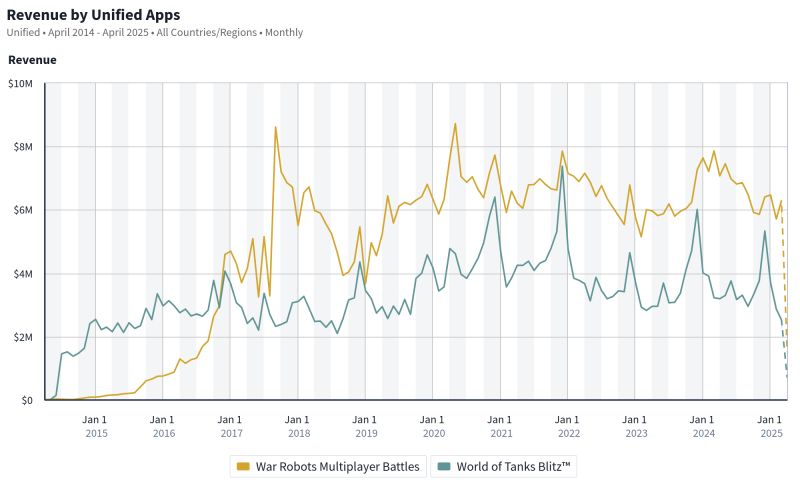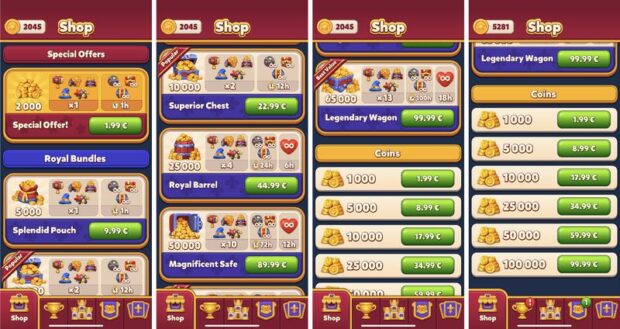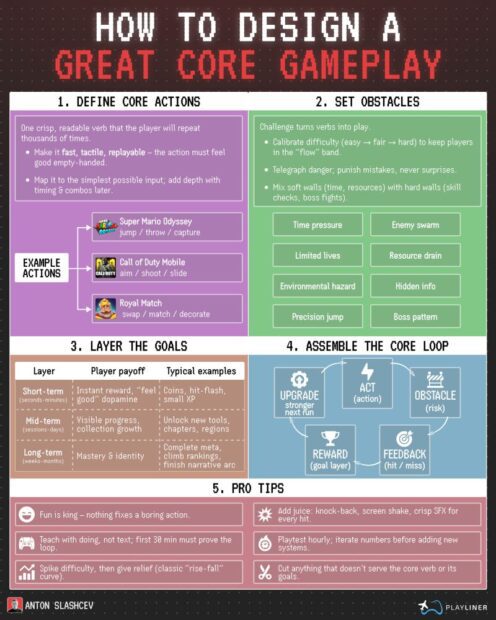
War Robots has never received the credit it deserves.
Journal 12 Phillip Black April 9

War Robots has never received the credit it deserves for its financial and design achievements.
Launching a PvP combat experience in 2014 with PS2-level graphics using virtual dual analog sticks seemed skeptical at best, yet the team didn’t just create a “Forever Franchise”; it grew into one. A former Scopely PM described their strategy as taking “C/C+ games and liveop’ing them into B/B+” products. Something similar has happened here, with the franchise catering to a sticky core audience, expanding it over time, and becoming an A product.
IAP Revenue is astonishingly stable despite massive changes in download composition (I’m sure the Indian shift is unrelated to geopolitics…). War Robots successfully captured not only Eastern European tankies but also the Japanese and US players. Its recent relaunch in China also appears more promising than its initial entry.
Initially, compared to World of Tanks Blitz, during its 2014 launch, both games found success, yet War Robots stands out, not only for its revenue but for inventing the “Vehicular Combat” mobile sub-genre. Pixonic, War Robots studio, has scaled to 150 employees with an annual IAP run rate of ~$150 million. In contrast, Monopoly Go supports ~200 headcount with a $1+ run rate, while Genshin Impact employs between 800-1000 headcount to achieve similar revenue. There’s been a lot of conversation about the rise of Chinese game development, but productivity rates in the West are still magnitudes higher, with rising Chinese wages. There’s a lot to say about genre content costs here as well.
From a game economy design view, War Robots has successfully and enthusiastically embraced paid power progression despite the core being real-time combat where players control one unit at a time. By forcing players to use different units across different spawns, War Robots injects a level of collection depth comparable to Genshin Impact’s real-time character switching mechanic. They’ve expanded it with additions like “Titan” mechs, which players can deploy once per match and comprise unique slots. Despite criticisms of “pay to win” mechanics in PvP games, War Robots’ model clearly resonates to the tune of $1B+.
Critics of power progression forget that matchmaking largely takes care of the “power differential” in real-time matches: players with more powerful units are matchmade into higher tiers, either explicitly by the system or as a natural consequence of every matchmaking algorithm over time.







